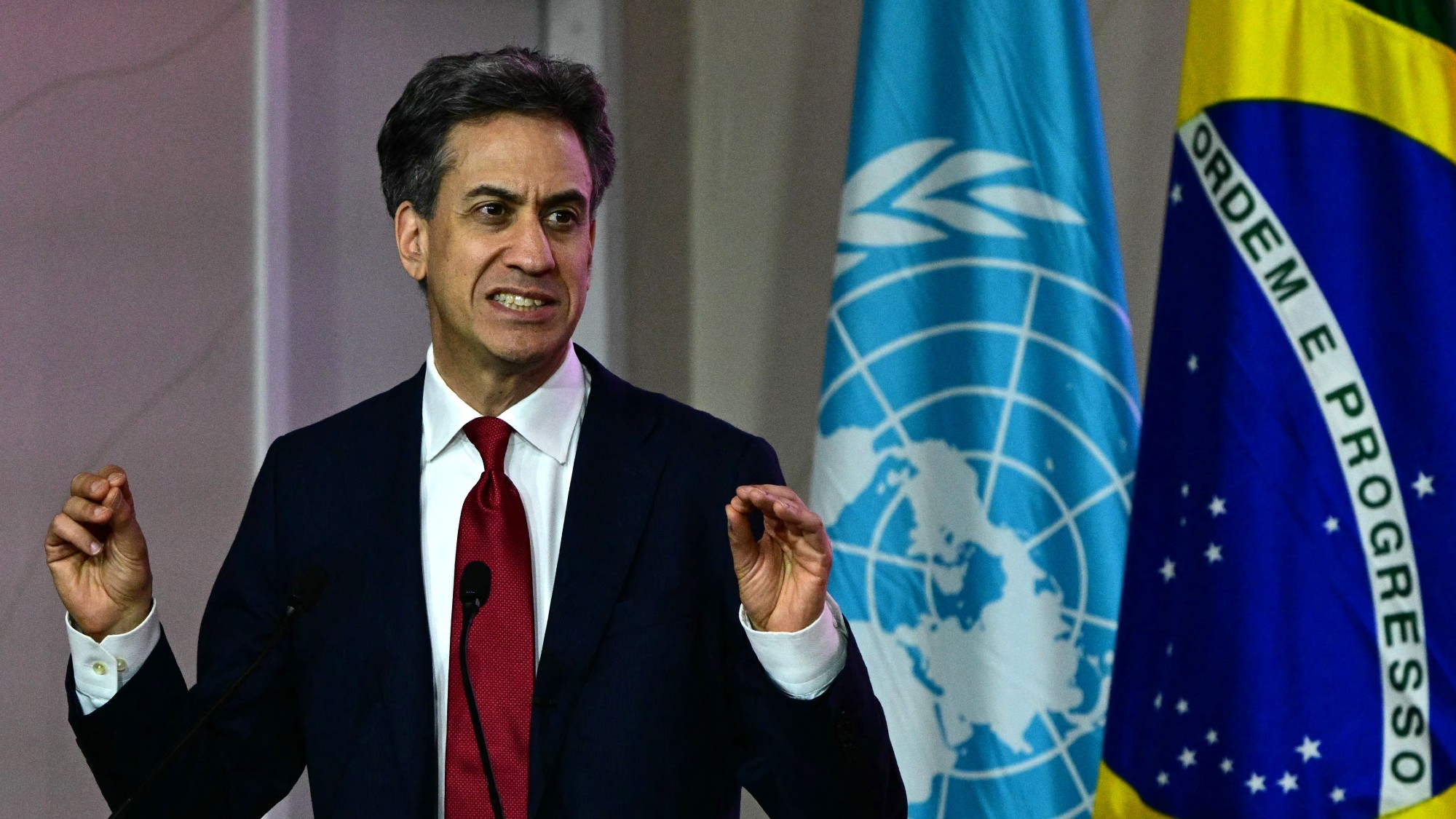The green arms race explained
Massive US subsidies for green technology are causing major shifts in the world economy

The Biden administration’s Inflation Reduction Act (IRA), which came into effect last August, is sending shockwaves through not just the green technology industry, but through the entire global economic order.
The IRA is a misnomer, designed to make it politically palatable: it will have little effect on inflation, at least in the short term. Rather, it is the largest climate bill in US history.
Although it also has other provisions, on healthcare spending and tax collection for instance, the IRA is primarily designed to tackle climate change and to boost America’s clean energy sector.
The Week
Escape your echo chamber. Get the facts behind the news, plus analysis from multiple perspectives.

Sign up for The Week's Free Newsletters
From our morning news briefing to a weekly Good News Newsletter, get the best of The Week delivered directly to your inbox.
From our morning news briefing to a weekly Good News Newsletter, get the best of The Week delivered directly to your inbox.
Because of the vagaries of US politics (it passed the senate by a single vote) it does this not by regulation and by imposing carbon taxes, as orthodox economics would decree, but with subsidies: it is almost all carrot, and no stick.
The act allocates federal investment for green tech (initially projected at $369 billion) mostly in the form of tax credits, as well as some grants.
What does the Biden administration hope to achieve?
The IRA’s main aims are to reduce emissions and create millions of new jobs in the technologies of the future: renewable energy (solar panels, wind turbines); heat pumps; batteries and grid storage; electric vehicles; hydrogen; carbon capture. It hopes that the subsidies will unleash trillions in private sector investment as well.
The act is also specifically designed to help the US to reduce its dependence in such industries on China, which it regards as a security threat and a strategic rival. Its provisions are designed to tempt manufacturing back into the US, known as “onshoring”.
A free daily email with the biggest news stories of the day – and the best features from TheWeek.com
How does the act encourage onshoring?
To take one example, the US now offers a tax credit of $7,500 for buyers of most electric and hydrogen-powered cars. However, this is conditional on final assembly taking place in the US or countries with which it has free trade agreements: chiefly Mexico and Canada.
There are also so-called “domestic content” rules: the more components and raw materials sourced in North America, the higher the tax credits available. Conversely, credits will not be available if critical minerals or parts come from a “foreign entity of concern”, including China, Russia or Iran. So it will encourage producers to cut China out of their supply chains.
Is the law a good thing?
In some ways, very. The Economist called it “America’s most serious effort yet to face up to climate change”. It is estimated that the IRA will help greenhouse gas emissions in the world’s largest economy to fall by 30% or 40% by 2030 on 2005 levels, around 10% more than they would have done without it. This will benefit the entire world.
It will also greatly speed up the “green transition” by heavily incentivising US industry to develop green solutions. However, it has also attracted much criticism.
Why has it been criticised?
Because, underneath the green rhetoric, this is America’s most overtly protectionist piece of legislation in decades. There are fears that its lavish subsidies could steer investment and expertise towards North America, away not just from its strategic rivals, but also from long-term allies.
The EU believes, and most experts agree, that it violates World Trade Organisation free trade rules. It is also part of a wider pattern: the third major recent law designed to strengthen US manufacturing, along with the CHIPS and Science Act (which allocates $280 billion to encourage advanced microchip manufacturing – currently dominated by Asian nations – in the US), and the Infrastructure Investment and Jobs Act of 2021.
These amount to “the most significant attempts to revive industrial policy in the Western capitalist world” since the aftermath of the Second World War, said Anne-Sylvaine Chassany in the Financial Times.
How is this affecting the world?
The IRA has been a roaring success. Not only does the US have light regulation, low energy prices and a vast internal market; it now also subsidises investment in green tech to an extent no other nation can afford. The results have been dramatic.
In the six months after the act passed, clean energy companies announced more than 100,000 new jobs in the US, with investments totalling $89 billion. Tesla has paused plans to make battery cells in Germany.
From BMW and Honda to the Swedish battery-maker Northvolt, foreign manufacturers have chosen to expand their US operations.
What is the EU doing about it?
The EU is contesting the IRA on free trade grounds, and is negotiating to secure tax credits for European products. The European Commission has also proposed its own Green Deal Industrial Plan, designed to encourage net-zero technologies and manufacturers by loosening state aid (subsidy) rules and simplifying regulation.
Although some have called for an EU-wide green subsidy programme, this does not exist yet; but most big European nations are already subsidising green technology, so the bloc’s overall level of state support is comparable to the US’s.
What about the UK?
The UK “risks being squeezed by its two largest trading partners”, said the think-tank IPPR in a report that described the Government’s response as “completely inadequate”. Labour has outlined a green industrial policy. As for the Conservatives, spending public money even on strategically vital industries goes against their instincts: Jeremy Hunt has criticised Biden’s policies.
The Government has provided relatively little support for UK green industries. There is now just one large battery plant in the country. Leading electric carmakers – Jaguar Land Rover, Stellantis (Vauxhall) – are threatening to leave the UK. Britain doesn’t have the money to subsidise on the US or EU scale.
Ministers are promising smarter regulation and targeted support for promising industries, but there is little to show for it yet.
-
 How to financially prepare for divorce
How to financially prepare for divorceThe Explainer Facing ‘irreconcilable differences’ does not have to be financially devastating
-
 Why it’s important to shop around for a mortgage and what to look for
Why it’s important to shop around for a mortgage and what to look forThe Explainer You can save big by comparing different mortgage offers
-
 4 ways to save on rising health care costs
4 ways to save on rising health care costsThe Explainer Health care expenses are part of an overall increase in the cost of living for Americans
-
 Environment breakthroughs of 2025
Environment breakthroughs of 2025In Depth Progress was made this year on carbon dioxide tracking, food waste upcycling, sodium batteries, microplastic monitoring and green concrete
-
 Crest falling: Mount Rainier and 4 other mountains are losing height
Crest falling: Mount Rainier and 4 other mountains are losing heightUnder the radar Its peak elevation is approximately 20 feet lower than it once was
-
 Death toll from Southeast Asia storms tops 1,000
Death toll from Southeast Asia storms tops 1,000speed read Catastrophic floods and landslides have struck Sri Lanka, Indonesia, Thailand and Malaysia
-
 Can for-profit geoengineering put a pause on climate change?
Can for-profit geoengineering put a pause on climate change?In the Spotlight Stardust Solutions wants to dim the sun. Scientists are worried.
-
 How will climate change affect the UK?
How will climate change affect the UK?The Explainer Met Office projections show the UK getting substantially warmer and wetter – with more extreme weather events
-
 Can the UK do more on climate change?
Can the UK do more on climate change?Today's Big Question Labour has shown leadership in the face of fraying international consensus, but must show the public their green mission is ‘a net benefit, not a net cost’
-
 Did Cop30 fulfil its promise to Indigenous Brazilians?
Did Cop30 fulfil its promise to Indigenous Brazilians?Today’s Big Question Brazilian president approves 10 new protected territories, following ‘unprecedented’ Indigenous presence at conference, both as delegates and protesters
-
 Can the world adapt to climate change?
Can the world adapt to climate change?Today's Big Question As the world gets hotter, COP30 leaders consider resilience efforts